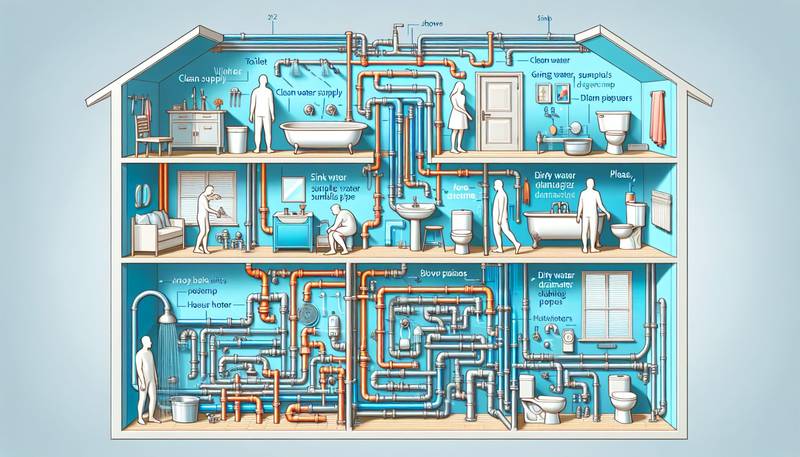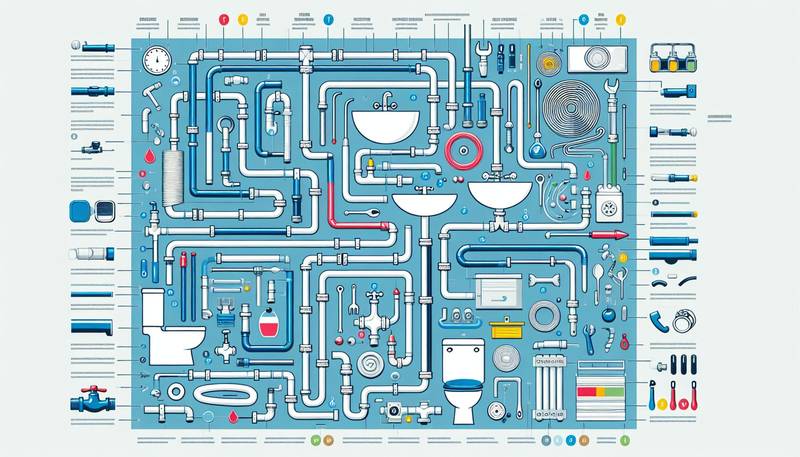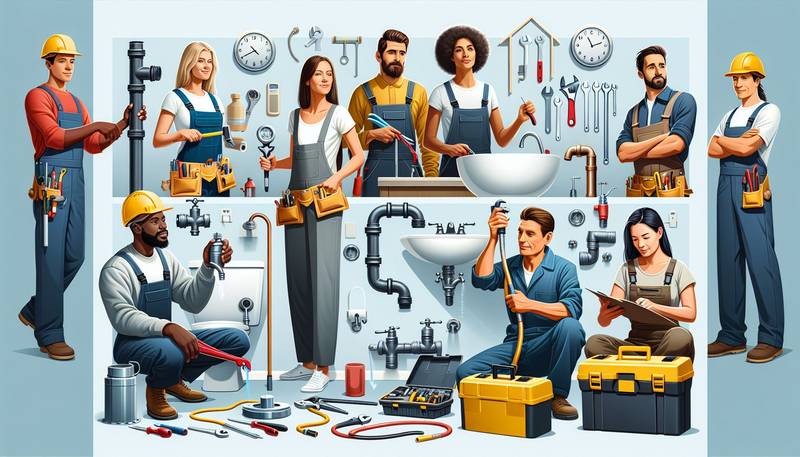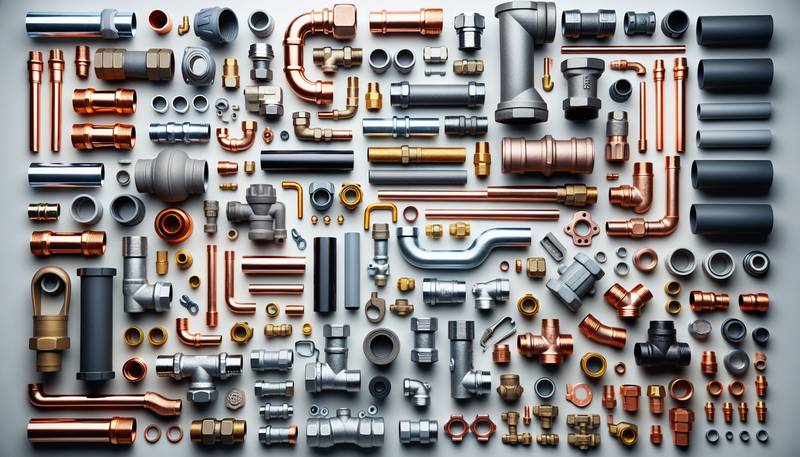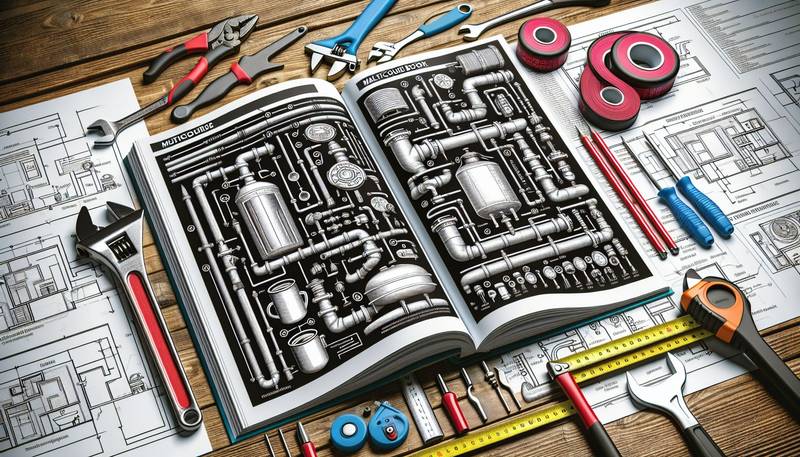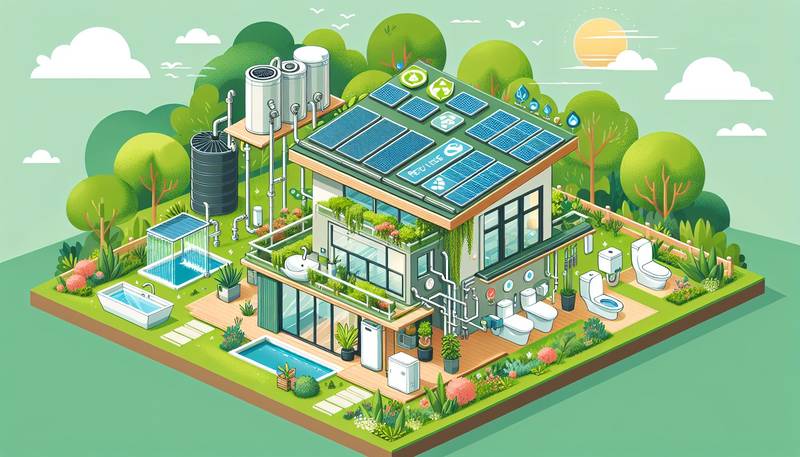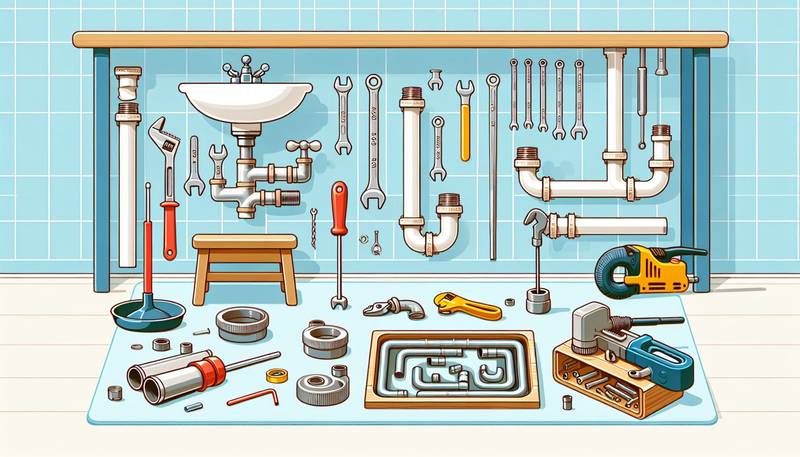The Anatomy of Your Home's Plumbing System
From the main water line to individual fixtures, each part plays a critical role in keeping your home running smoothly.
Main Water Line
The main water line is the artery of your home's plumbing system, responsible for bringing fresh water into your house from the municipal water supply. Typically located underground, the main water line connects to your home's water meter before branching off into smaller supply lines that feed individual fixtures and appliances. If there is a problem with the main water line, it can cause a loss of water pressure throughout your home and may require professional repair or replacement.
Supply Lines
Supply lines are the pipes that distribute water to various fixtures in your home, such as sinks, showers, and toilets. These lines are typically made of copper, PVC, or PEX tubing and are connected to the main water line. Supply lines can be vulnerable to leaks and corrosion over time, so it's important to inspect them regularly for signs of wear and tear.
Fixtures
Fixtures are the endpoints of your home's plumbing system, where water is delivered for various uses. Common fixtures include faucets, toilets, showers, and washing machines. Each fixture has its own supply line that connects it to the main water line, allowing for individual control of water flow. If you experience issues with a specific fixture, such as low water pressure or a clog, it may indicate a problem with the supply line or the fixture itself.
Drainage System
The drainage system is responsible for removing wastewater from your home and transporting it to the sewer or septic system. Drainage pipes are typically made of PVC or cast iron and are designed to carry waste water away from fixtures and appliances. It's important to keep your drainage system clear of debris and buildup to prevent clogs and backups.
Vent Stack
The vent stack is a vertical pipe that runs from the drainage system to the roof of your home, allowing sewer gases to escape and preventing air pressure buildup in the pipes. Vent stacks also facilitate proper drainage by allowing air to enter the system, preventing suction that can impede the flow of wastewater. If you notice gurgling sounds coming from your drains or slow drainage, it may indicate a problem with the vent stack.
Septic Tank (if applicable)
If your home is not connected to a municipal sewer system, you likely have a septic tank to collect and treat wastewater. A septic tank works by separating solids from liquids and breaking down organic matter through bacterial digestion. Regular maintenance of your septic tank is essential to prevent backups and ensure proper function.
Conclusion
Understanding the anatomy of your home's plumbing system is key to maintaining a functional and efficient household. By familiarizing yourself with the main components of your plumbing system, you can better identify and address potential issues before they become major problems. Regular inspection and maintenance of your plumbing system can help prolong its lifespan and prevent costly repairs down the line.
